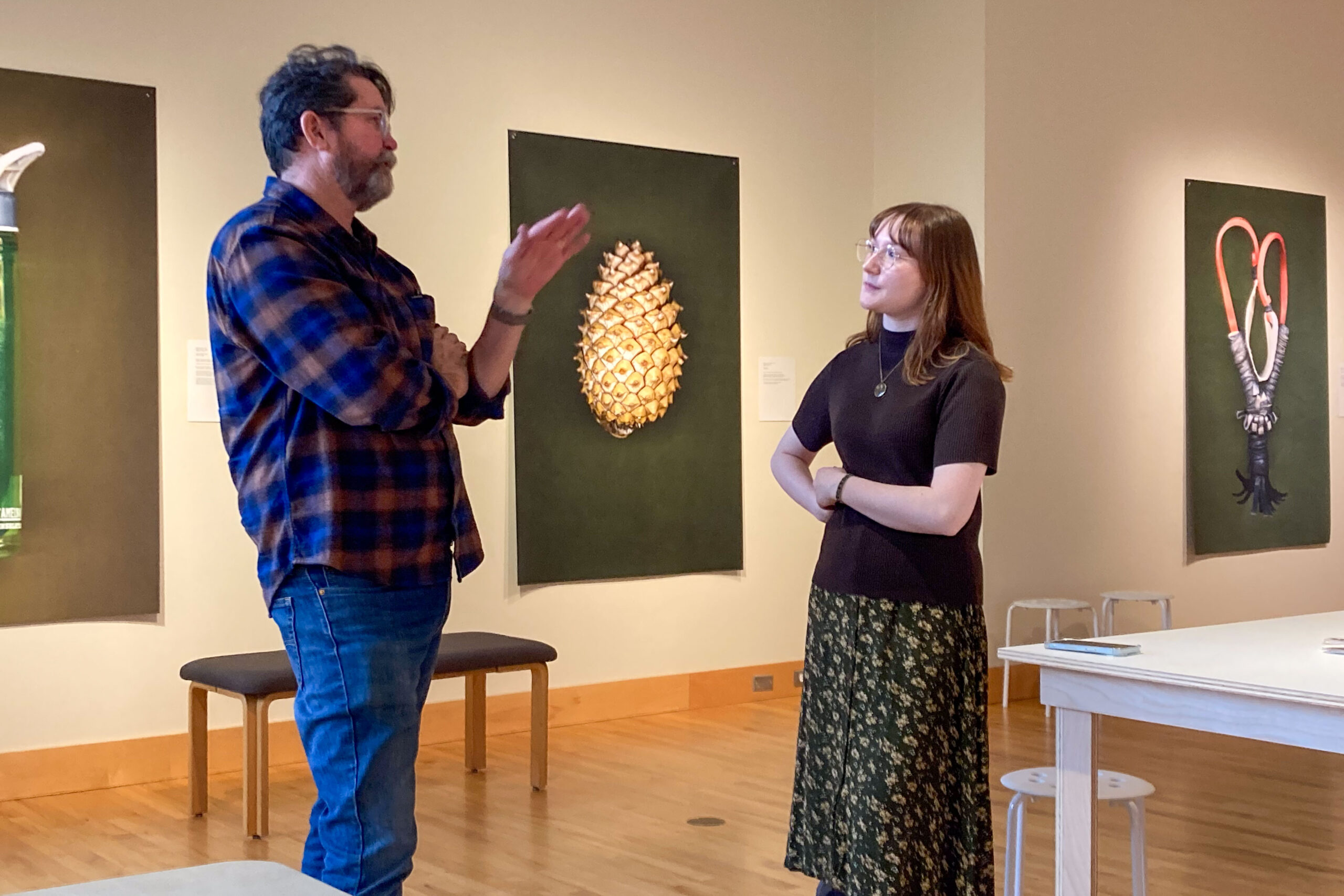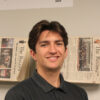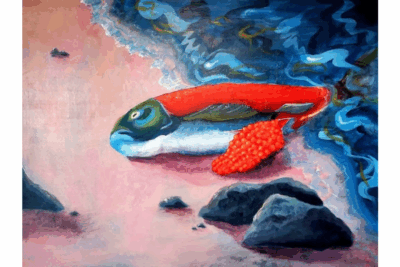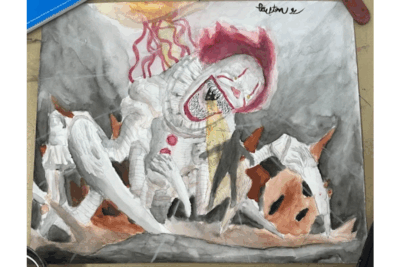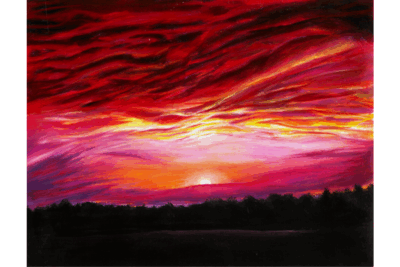Tom Ashcraft, a professor of fine arts at West Carolina University, visited Goshen College as part of a college endowment for visiting artists.
Ashcraft and the art department hosted a reception and workshop along with a speech at convocation. The focal point of this lecture centered around his art exhibit “Du Quotidien,” which was recently displayed in the Hershberger Art Gallery in the Music Center.“I always walk past the gallery in the Music Center for choir,” said Lukas Bontrager-Waite, a senior writing major and reception attendee. “I’m always curious about whatever showcase they have set up in there, so it was nice to hear an explanation of what all he had going on. I definitely got way more out of it afterward, and it was also great to get a deep dive into all of his other work — especially the plant bench.”
Prior to the workshop, visiting students were asked to bring a handheld item of their choice. Once they arrived, they were asked to fill out a paper briefly explaining the significance and story tied to their object.
Following this, students, staff and other attendees were asked to take a portrait along with their chosen item as a continuation of Ashcraft’s “Du Quotidien” exhibit. Items ranged from a deck of cards, a sock monkey and a jar of jelly beans to rings and family heirlooms.
The workshop was open to everybody, all majors included, which is something the art department is working toward: welcoming everyone
“If you look at the pictures, they’re not all art students who did this, said Sara Method, assistant professor of art. “That’s kind of a big part of it, being open to the campus, so we didn’t limit it to just being art majors because art shouldn’t be limited to only what happens in [the art] building or in this sculpture building. We want it to be open to campus for anyone … art is open to anybody.”
Emanuel Villanueva, a senior business major and attendee of the workshop, noticed the stress Ashcraft put on connecting to people in his work and with students in the workshop, along with his “ethnographic approach.”
“[He] kind of reminds me of the business approach,” he said. “He’s really people oriented in his work. Even the morning [workshop], he included us and was talking with us.”
With the photography exhibitions and artwork came connections through talking and exploring the meaning of art. Ashcraft went on to explain the underlying theme pushing this workshop forward; the people.
“He’s calling this [workshop] ‘Assembly’ because it’s about people,” said Method. “That’s another piece that he talks about … another part of this is people coming together to … do this workshop as part of the art.”
Method continued, “The students that came started getting snacks and hanging out and … you started having laughter and conversation and sharing your story. … that’s just as important as that engagement with each other.”
